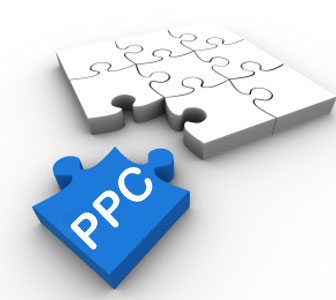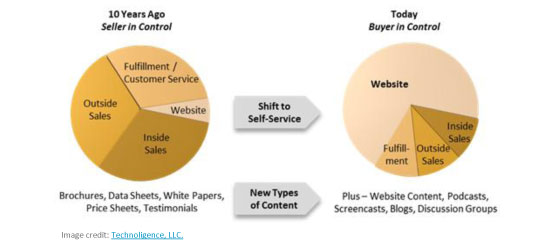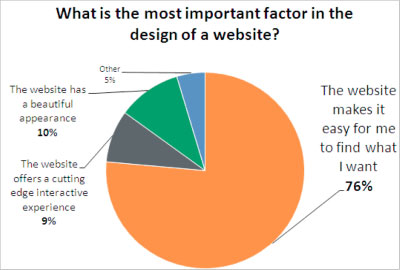by Admin on August 24, 2012
“Are you going to submit our website to the search engines?” That’s a question we often get from clients. They tell us their old website firm would submit their website to 30+ search engines every quarter and charge them $150 or more to do it. Don’t waste your money!
While submitting your website to search engines may have had its place in the early days, the way search engines do business has changed and it is no longer effective. A much more effective way to get noticed by the search engines is the XML Sitemap. Here is what Google says about the XML Sitemap:
Sitemaps are a way to tell Google about pages on your site we might not otherwise discover. In its simplest terms, a XML Sitemap—usually called Sitemap, with a capital S—is a list of the pages on your website. Creating and submitting a Sitemap helps make sure that Google knows about all the pages on your site, including URLs that may not be discoverable by Google’s normal crawling process.
We use a plugin on all of our websites that automatically creates and updates an XML Sitemap and pings the 3 major search engines every time a change is made to the website. We also recommend that our clients go to GetListed.org to claim their businesses.
So our answer is, “No we don’t waste your money or our time submitting your site to search engines; we have a better way.”
by Admin on August 20, 2012
Many businesses treat their websites as nothing more than Yellow Page ads. Remember the Yellow Pages… those yellow phonebooks you’d search through when you needed a plumber, auto mechanic or even a doctor (although doctors couldn’t have more than their name, address and phone number for the longest time). Businesses would buy the biggest ad they could afford. Some businesses even named their companies so they would so up first in the Yellow Pages (AAAA Insurance, for example).
Yellow Pages were very inefficient. They were only printed once a year. If your business started after the deadline for printing, you had to wait until next year. And a business could go out of business between the time they paid for an ad and when the Yellow Pages were printed. So, unlike websites, they could never quite be up to date.
Yellow Page ads are static and usually provide little more than a list of services or products the business offers, the address and phone number. Many businesses have websites that are nothing more than prettier versions of their Yellow Page ads. But websites can and should be much more.
A business website should be a dynamic, interactive lead/customer generating machine. After all, the ultimate goal of a business website is to get customers. A business website can do this by interacting with website visitors, prompting them to download eBooks and White Papers, and providing them with up to date information through a blog. This is all part of the Inbound Marketing Process which uses a business’s web presence to move web visitors down the Sales Funnel into leads and customers.
You can find out more about the Inbound Marketing Process on this blog or you can attend one of our upcoming webinars.
by Admin on August 13, 2012
We’ve talked here before about blogging being the best SEO method/tactic; well Inbound Marketing is the best SEO strategy. Inbound Marketing a strategy that uses content (blogging), email, and social media to get found on the internet and convert those visitors into leads and customers. This is done through: 1) content, 2) distribution and 3) engagement.
In the old days, SEO was more about technical SEO, such as: on page scripting, link building, SEO programming, competitor audits, pages created to rank for a particular keyword, etc. In the past, if you had enough quality back links, you could forgo quality content.
Today, rather than measuring how well you rank on Google or other search engines, you’re better off measuring how many keywords you rank for. MarketingTech Blog recently found that 72% of their search traffic came from keywords where they ranked lower than the first page. It used to be that people didn’t look further than the first page of search results, but apparently they are now.
One of our fellow HubSpot Partners, KunoCreative, has shown how they grew by switching to Inbound Marketing. They have data over a 26 month period (13 traditional SEO, 13 Inbound Marketing). By using Inbound Marketing, they:
- Increased Organic Traffic 450%
- Increased #Keywords Driving Organic Traffic 556%
- Increased # of Organic Leads 633%
We’ll talk more next time about how and why this happened and how you can make it happen for you.
by Admin on July 24, 2012
 Clients often ask if they should use pay per click (PPC) advertising. And our answer always depends upon the client and her website.
Clients often ask if they should use pay per click (PPC) advertising. And our answer always depends upon the client and her website.
We have all seen the studies that show some 70% of search engine users don’t click on PPC ads. So, why would someone use PPC ads? Well, that leaves 30% of search engine users who will click on PPC ads, and that is significantly more than 0%.
There are a few times when PPC advertising can be very effective:
- a keyword phrase that is of vital importance, but so competitive it is impossible to get on the first page of search results.
- a new website that hasn’t been around long enough to establish credibility in search engine rankings.
- a website redesign where the original website had poor SEO and never established credibility in search engine rankings.
- the introduction of a new product or service where the webpage is new and has yet to establish search engine credibility.
We all know that, if your website is not on the first two pages (higher in most cases) of search results, it is invisible to most searchers. So having a PPC ad, which 70% of the viewers will never click and only 30% may click, is far superior to being invisible.
PPC advertising can be an effective part of your internet marketing strategy. But use it judiciously, and don’t use it for terms where you already rank in the top 3 or 4 of search engine results.

by Admin on July 17, 2012
Content Management Systems vs. Static Websites
In the old days, most, if not all, websites were static and were created using HTML, Javascript and/or Flash. You could not edit these websites unless you understood the code or had special software. This made it expensive to maintain these websites.
Content Management Systems (CMS) were created to solve this problem. A CMS allows a person, who doesn’t possess programming skills, to update a website (i.e. create pages and make changes to pages). This can greatly reduce the cost of maintaining a website.
Some of the benefits of using a CMS are:
- If your CMS is open source (WordPress, Drupal or other), you are not stuck with your web developer, there are thousands of other developer familiar with these CMSs ready to help you.
- Ability to update your website from any computer using a browser without using your web developer.
- Built-in search capability.
- Plugins or add-ons for adding photo galleries, calendars, tables, forums, membership only sections, selling items, etc.
So if you’re tired of paying your web designer every time you want to make a small change to your website, you should look into converting your site to a CMS. Many CMS website designers can keep the look and feel of your current website if that’s what you like.

by blogmistress on July 12, 2012
1&1 Internet recently reported that up to 40% of small and medium size businesses still don’t have a website. That is shocking news. Social media has, in many cases, taken the place of the business website; but business owners need to understand that social media, while very important, is a tool in an overall marketing strategy. A business website is also a very important tool, but it must be a website that performs.
In the past, a business could just put up a static site and call it a day. Today, your website must attract visitors, educate them and convert them into customers. That is a lot to ask of a website, but when done right, it can bring a significant return on your investment. Businesses must integrate social media, content, blogging and more to meet the demands of today’s consumers.
Consumers now want to be educated, they want to be informed more than “sold.” This is a fundamental shift in consumer behavior.

What are you doing to inform consumers about your products and services? When a visitor comes to your site, are they getting information that will help them make a buying decision? Can they find it easily? Realizing the power of information is a great first step in making your website an inbound marketing machine that performs like a champion.

by blogmistress on April 16, 2012
Website design is an important part of internet marketing, but it is just a part. How often, in website design circles, do you think a discussion with a client starts out with questions centered around how the website should “look” or “feel?” Probably, more than you may think. How often do you think that is the wrong place to start? What is your guess? My answer isn’t a guess, it is a statement that how the website “looks” and “feels” is ALWAYS the wrong place to start. Don’t get me wrong, you will need to get to those issues at some point, but it is certainly never the first issue.
Let’s look at what is important to your customers when they visit your website:
 From: HubSpot
From: HubSpot
76% of people think that finding what they want is the most important factor of design, while only 10% think beauty is most important. Having an attractive website is important, but making sure that people can find what they are looking for is most important. Possibly, the first questions for clients should be centered around things such as:
- What is the goal of your website?
- What do you want people to do once they are on your website?
- What calls to action do you need on your website?
- Who is your target audience?
Once you have answered some of these basic questions, the design can fall into place around that. Remember, every element of your website should have a purpose. Making it easy for visitors to discover the information they are looking for in an easy to navigate, simple way is most important. It is what will convert visitors into leads and customers for your business which is, generally, the ultimate purpose of your site.
The actual “design” as in the layout, colors and fonts on your website are the easiest part to put together. Your site should be aesthetically pleasing, but just make sure it does not distract from the information and calls to action that you present. Pretty, elegant and simple are good goals to reach for as far as looks. Just keep it simple. Think about your own experience with websites. Have you ever done business with someone you found online because of the font they used on their website? What about the background color or layout? Has that ever gotten you to pick up the phone? Most likely not. Those are just elements that should contribute to the overall goal of your website.
What do you think?

by blogmistress on March 1, 2012
Make sure that your website is always improving. You should always be reviewing your metrics to see what offers are most successful and improving on them to convert even more visitors into qualified leads for your business.
Focus on these three metrics:
- Visitors
- How many people are coming to my website?
- Where are they coming from?
- Leads.
- How many visitors converted to leads?
- What did they convert on?
- Sales.
- How many leads converted to sales?
These metrics will help you determine what parts of your website need revision. Metrics are pivotal for pinpointing the exact pain points of your website. By doing small, but constant adjustments to your website, you will be able to maximize the utility of your website so it becomes a platform for generating visitors, leads, and ultimately, sales.

by blogmistress on February 29, 2012
It is important to have a system in place that tracks your conversion performance. Wharton Marketing can provide you with ways to analyze the effectiveness of each individual landing page and offer to make sure you are getting the most out of your marketing efforts.
- Your offers should be living, breathing documents that are constantly changing.
- They need to help educate your prospects on the buying process.
- If your landing pages and offerings do not seem to be reaching their full potential, you should try to:
- Attach their links in your email newsletters.
- Have your pay-per click ads go right to the landing page.
- Use them as the next step after a trade show or event.
Website design is not a one and done deal. Your web pages should evolve and improve over time. This is especially important for your landing pages since they help convert your faceless website visitors into opportunities that you have collected vital information about.

by Admin on February 28, 2012
Donʼt make the mistake of underestimating the importance of a compelling landing page. This is where you can see real results of your website redesign.
An effective landing page:
- Leaves out any website navigation.
- Keeps the description of the offer clear, simple, and concise.
- One company found that they had a 32% conversion rate with a longer description and form field. They cut it down, which brought their conversion rate to 53%.
- Keep the form above the fold.
To maximize efficiency, consider these questions:
- How fast can you launch a new landing page?
- Can one person do it in 15 minutes?
- What is the cost of experimentation?
Landing pages are where the magic happens. They are the gateway to your conversion offers that create engaged and interested leads. Make sure you can grab their attention with an interesting offer, but also coherently explain what you are offering through the landing page!
Download the free eBook: 7 Steps to Website Redesign Success to see some other vehicles for original content.

 Clients often ask if they should use pay per click (PPC) advertising. And our answer always depends upon the client and her website.
Clients often ask if they should use pay per click (PPC) advertising. And our answer always depends upon the client and her website.



 From: HubSpot
From: HubSpot